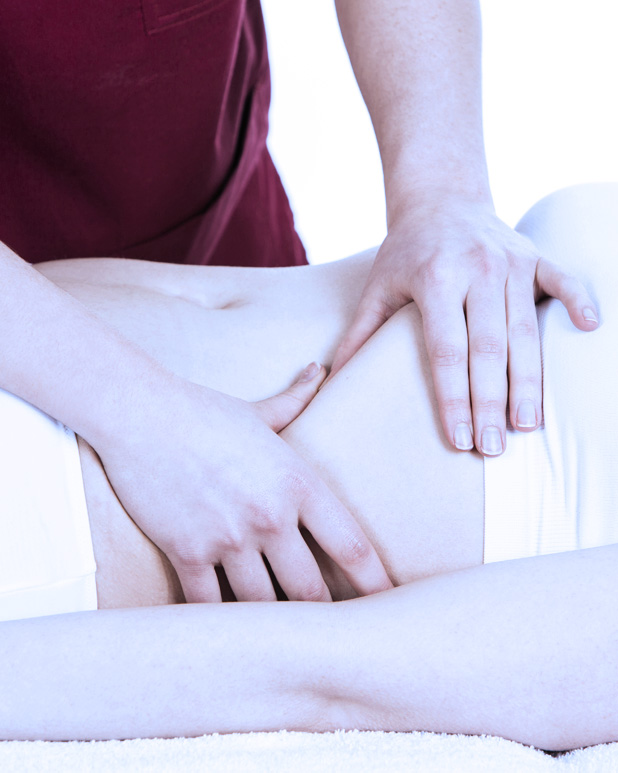Find a therapist
The Network of professional massage therapists of Quebec brings together more than 8,000 massage therapists
Member and insurer access
Find a therapist
The Network of professional massage therapists of Quebec brings together more than 8,000 massage therapists
The release or the stretching of the diaphragm enables to restore flexibility to this muscle in order to recover a suitable respiratory movement.
The diaphragm is the main muscle of breathing. Poor stress management, poor posture or mechanical dysfunction in the chest, among other things, can cause the diaphragm to lock up in the lower position. As a result, this tension creates a feeling of tightness and fatigue in the chest. Over a longer period, this can lead to backaches, digestive problems, feeling of tired legs or headaches. The release or stretching of the diaphragm helps to recover suppleness to this muscle to restore proper breathing and eliminate these problems.
Once the tension on the diaphragm is released, it can begin to participate harmoniously with the respiratory movement and allow the body to recover its maximum lung capacity. Healthy breathing can relax the nervous system, improve sleep, reduce the effects of stress on the body and allow greater focus. The diaphragm release also helps to restore better posture and improve digestion.

The therapist can match the diaphragm release technique with another more comprehensive massage technique. The therapist will release the abdominal area, but he will first use sheets or towels to make sure to preserve the privacy of the person lying on the table.
Contraindications to diaphragm release remain the same as for most techniques: fever, infection, wounds or skin problems, and a history of cardiac disorders.
Find a therapist